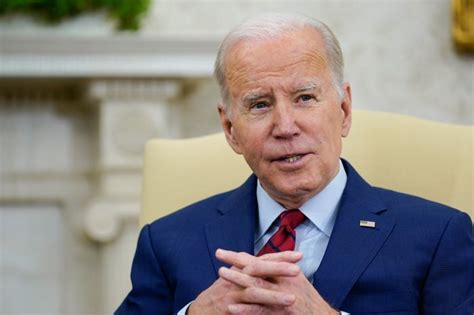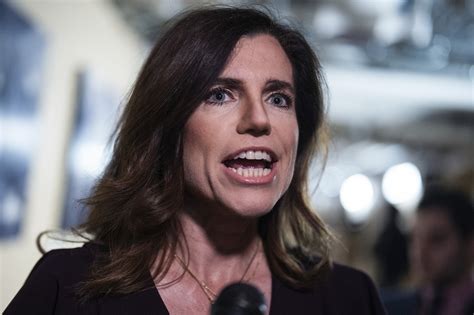
President Joe Biden has battled non-melanoma skin cancer for years, his physician revealed, a detail that surfaced during a recent discussion on MSNBC’s “Morning Joe” and prompted surprise from the show’s hosts. While the cancers were removed, Biden continues to be monitored for any new skin cancer developments.
President Biden has a history of non-melanoma skin cancer that has been addressed through removal procedures prior to and during his presidency, according to details revealed by his physician. The disclosure, which came as a surprise to the hosts of MSNBC’s “Morning Joe,” underscores the routine monitoring and treatment the president undergoes for these types of skin cancers, which are distinct from the more dangerous melanoma.
The revelation stemmed from a broader conversation about President Biden’s health and fitness for office. While discussing a range of health-related topics, an oncologist contributing to the show mentioned Biden’s history with non-melanoma skin cancer, clarifying that the cancers had been removed and that the president remains under surveillance. This information, though not entirely new, was not widely known and prompted visible surprise among the “Morning Joe” hosts.
Non-melanoma skin cancers are the most common form of cancer in the United States, according to the American Cancer Society. These cancers typically develop on areas of the skin that are frequently exposed to the sun, such as the head, neck, and arms. The two most common types of non-melanoma skin cancer are basal cell carcinoma and squamous cell carcinoma. These cancers are generally slow-growing and rarely spread to other parts of the body, especially when detected and treated early. Treatment options include surgical removal, radiation therapy, and topical medications.
The White House has periodically released health summaries of President Biden, which have included details about dermatological procedures. These reports have typically mentioned the removal of skin lesions and the importance of ongoing monitoring. However, the specific characterization of these removals as treatments for “skin cancer,” even non-melanoma types, adds a layer of detail that had not been previously emphasized in public communications.
The disclosure of President Biden’s history with non-melanoma skin cancer provides an opportunity to educate the public about the prevalence and management of this common form of cancer. It also highlights the importance of regular skin checks and sun protection measures, regardless of age or health status. The fact that even the president of the United States is susceptible to skin cancer underscores the universality of this health concern.
The White House has not yet released an official statement following the “Morning Joe” discussion, but it is likely that further details will be provided to clarify the president’s health status and ongoing medical care. The transparency surrounding President Biden’s health is consistent with past practices, although the level of detail provided on this particular issue may reflect a renewed effort to address concerns about his age and fitness for office.
The information shared during the “Morning Joe” broadcast reiterates the importance of regular dermatological screenings, especially for individuals with a history of sun exposure or a family history of skin cancer. It also serves as a reminder that non-melanoma skin cancers, while generally less dangerous than melanoma, still require prompt diagnosis and treatment to prevent potential complications.
The disclosure of President Biden’s history with non-melanoma skin cancer, while perhaps surprising to some, is a testament to the proactive healthcare he receives. It is also a reminder that skin cancer is a prevalent health issue, and regular check-ups are essential for early detection and treatment. The incident also brings to light the importance of clear and consistent communication regarding health matters, especially for public figures.
The revelation has sparked conversations across the political spectrum, with some focusing on the president’s overall health and fitness for office, while others emphasize the importance of skin cancer awareness and prevention. Regardless of political affiliation, the incident serves as a valuable reminder of the importance of proactive healthcare and transparent communication about health matters.
The information shared on “Morning Joe” has prompted viewers and readers to seek more information about non-melanoma skin cancer, its causes, symptoms, and treatment options. This increased awareness is a positive outcome of the disclosure, as it can encourage individuals to take proactive steps to protect their skin and seek medical attention if they notice any suspicious changes.
The “Morning Joe” segment highlighted the delicate balance between transparency and privacy when it comes to the health of public figures. While there is a legitimate public interest in knowing about the health of the president, there are also considerations regarding personal privacy and the potential for political exploitation. Navigating this balance requires careful consideration and a commitment to providing accurate and relevant information without sensationalizing or misrepresenting the facts.
The mention of President Biden’s skin cancer history served as a public service announcement, reminding everyone that skin cancer is a pervasive health issue. It also underlines the importance of early detection, regular check-ups, and appropriate treatment. The incident has also prompted many people to reconsider their own sun protection habits and to schedule skin cancer screenings with their dermatologists.
The episode also serves as a crucial reminder that even high-profile figures deal with common health concerns. It can help destigmatize discussions about health and encourage more people to seek the care they need. The revelation about President Biden’s skin cancer history makes him appear more relatable and human, which could resonate with some voters.
The way the news was handled on “Morning Joe” emphasizes the importance of responsible journalism. The show’s hosts handled the information with sensitivity and respect, while also providing viewers with accurate and informative context. This approach can help to build trust and credibility, which is essential for effective communication in a media-saturated world.
The fact that the news about President Biden’s skin cancer history was revealed almost incidentally during a broader discussion about his health suggests that it was not considered a major health concern. This could be due to the fact that the cancers were non-melanoma and had been successfully removed. However, the incident also highlights the importance of paying attention to the details and ensuring that all relevant information is communicated clearly and accurately.
The information shared on “Morning Joe” provides an opportunity to correct any misconceptions about skin cancer. It is important to emphasize that not all skin cancers are deadly and that many can be successfully treated with early detection and appropriate medical care. By providing accurate and informative context, the media can help to reduce fear and anxiety and encourage people to take proactive steps to protect their skin.
The disclosure about President Biden’s skin cancer history has also prompted discussions about the role of the media in covering the health of public figures. Some argue that the media has a responsibility to provide comprehensive and transparent information about the health of elected officials, while others argue that public figures are entitled to a certain degree of privacy. Finding the right balance between these competing interests is a complex and ongoing challenge.
The revelation about President Biden’s history with non-melanoma skin cancer, even though addressed, underscores the need for continual health vigilance, especially in individuals who spend significant time outdoors or have a history of sun exposure. It is a testament to the importance of regular check-ups and the proactive management of health conditions.
The information shared on “Morning Joe” reinforces the message that skin cancer can affect anyone, regardless of age, gender, or ethnicity. It is a reminder that everyone should take steps to protect their skin from the sun and to seek medical attention if they notice any suspicious changes.
FAQ: President Biden’s Skin Cancer History
Q1: What type of skin cancer did President Biden have?
A: President Biden has a history of non-melanoma skin cancer, specifically basal cell carcinoma and squamous cell carcinoma, which are the most common types of skin cancer. These types are generally slow-growing and less likely to spread than melanoma.
Q2: Was the skin cancer successfully treated?
A: Yes, according to his physician, the non-melanoma skin cancers were removed prior to and during his presidency. He continues to be monitored for any new developments.
Q3: Is President Biden currently battling skin cancer?
A: No, the cancers have been removed. However, he is under continued dermatological surveillance, which is standard practice for individuals with a history of skin cancer.
Q4: Should I be concerned about the President’s health given this information?
A: While any health concern for a public figure can raise questions, non-melanoma skin cancers are very common and typically treatable when detected early. The fact that the cancers were removed and he is being monitored suggests proactive management of his health.
Q5: What are the symptoms of non-melanoma skin cancer that I should look out for?
A: Symptoms of non-melanoma skin cancer can vary but often include a new growth, a sore that doesn’t heal, a change in an existing mole, or a scaly or crusty patch of skin. It is best to consult with a dermatologist for a comprehensive skin exam if you notice any suspicious changes.
The mention of President Biden’s skin cancer history served as a public service announcement, reminding everyone that skin cancer is a pervasive health issue. It also underlines the importance of early detection, regular check-ups, and appropriate treatment. The incident has also prompted many people to reconsider their own sun protection habits and to schedule skin cancer screenings with their dermatologists.
The episode also serves as a crucial reminder that even high-profile figures deal with common health concerns. It can help destigmatize discussions about health and encourage more people to seek the care they need. The revelation about President Biden’s skin cancer history makes him appear more relatable and human, which could resonate with some voters.
The way the news was handled on “Morning Joe” emphasizes the importance of responsible journalism. The show’s hosts handled the information with sensitivity and respect, while also providing viewers with accurate and informative context. This approach can help to build trust and credibility, which is essential for effective communication in a media-saturated world.
The fact that the news about President Biden’s skin cancer history was revealed almost incidentally during a broader discussion about his health suggests that it was not considered a major health concern. This could be due to the fact that the cancers were non-melanoma and had been successfully removed. However, the incident also highlights the importance of paying attention to the details and ensuring that all relevant information is communicated clearly and accurately.
The information shared on “Morning Joe” provides an opportunity to correct any misconceptions about skin cancer. It is important to emphasize that not all skin cancers are deadly and that many can be successfully treated with early detection and appropriate medical care. By providing accurate and informative context, the media can help to reduce fear and anxiety and encourage people to take proactive steps to protect their skin.
The disclosure about President Biden’s skin cancer history has also prompted discussions about the role of the media in covering the health of public figures. Some argue that the media has a responsibility to provide comprehensive and transparent information about the health of elected officials, while others argue that public figures are entitled to a certain degree of privacy. Finding the right balance between these competing interests is a complex and ongoing challenge.
The revelation about President Biden’s history with non-melanoma skin cancer, even though addressed, underscores the need for continual health vigilance, especially in individuals who spend significant time outdoors or have a history of sun exposure. It is a testament to the importance of regular check-ups and the proactive management of health conditions.
The information shared on “Morning Joe” reinforces the message that skin cancer can affect anyone, regardless of age, gender, or ethnicity. It is a reminder that everyone should take steps to protect their skin from the sun and to seek medical attention if they notice any suspicious changes.
The unexpected disclosure of President Biden’s history with non-melanoma skin cancer during a “Morning Joe” segment underscores the unpredictable nature of news and the importance of responsible reporting when dealing with sensitive information. The hosts’ surprise reaction highlights the fact that, while health summaries are periodically released, the specific characterization of past removals as treatments for skin cancer, even non-melanoma types, was not widely emphasized.
The incidental nature of the revelation also raises questions about the White House’s communication strategy regarding the President’s health. While transparency is generally valued, there may be strategic decisions about what information to proactively release and what to address only when prompted. This incident could lead to a reevaluation of that strategy, particularly as concerns about the President’s age and fitness for office continue to be a topic of public discussion.
The incident also serves as a reminder of the importance of distinguishing between different types of skin cancer. Non-melanoma skin cancers, while common, are generally less aggressive than melanoma and have a high cure rate when detected and treated early. By emphasizing this distinction, the media can help to alleviate unnecessary anxiety and encourage people to take proactive steps to protect their skin.
The revelation on “Morning Joe” also provides an opportunity to discuss the broader issue of healthcare access and equity. While President Biden has access to the best medical care available, many Americans struggle to afford even basic healthcare services. This disparity highlights the need for policies that ensure everyone has access to affordable and quality healthcare, regardless of their socioeconomic status.
The disclosure of President Biden’s skin cancer history could also have political implications. While some may use it to raise concerns about his health and fitness for office, others may see it as a sign of his resilience and determination. Ultimately, the impact on his approval ratings and electability will depend on how the information is framed and interpreted by voters.
The event also highlights the evolving role of media in shaping public perceptions. In an era of social media and 24-hour news cycles, information can spread quickly and uncontrollably. It is therefore crucial for media outlets to exercise responsibility and ensure that they are providing accurate and contextualized information, especially when dealing with sensitive topics such as health.
The revelation could also prompt a renewed focus on preventative healthcare. By emphasizing the importance of regular skin checks and sun protection measures, the media can help to encourage people to take proactive steps to protect their health and reduce their risk of developing skin cancer.
In conclusion, the unexpected disclosure of President Biden’s skin cancer history on “Morning Joe” has sparked a wide-ranging discussion about health, transparency, and the role of media. While the specific implications remain to be seen, the incident serves as a valuable reminder of the importance of proactive healthcare, responsible journalism, and clear communication.
The information gleaned from the “Morning Joe” segment offers a crucial opportunity to delve deeper into the specifics of non-melanoma skin cancer, shedding light on its prevalence, risk factors, detection, and treatment. According to the American Academy of Dermatology, skin cancer is the most common form of cancer in the United States, with millions of cases diagnosed each year. Non-melanoma skin cancers, including basal cell carcinoma (BCC) and squamous cell carcinoma (SCC), account for the vast majority of these cases.
Basal cell carcinoma typically presents as a pearly or waxy bump, a flat flesh-colored or brown scar-like lesion, or a sore that bleeds and scabs over. Squamous cell carcinoma, on the other hand, often appears as a firm, red nodule, a scaly, crusty patch, or a sore that doesn’t heal. Both types of cancer are primarily caused by exposure to ultraviolet (UV) radiation from the sun or tanning beds. Other risk factors include fair skin, a history of sunburns, a family history of skin cancer, and a weakened immune system.
Early detection is crucial for successful treatment of non-melanoma skin cancer. Regular self-exams, along with annual skin exams by a dermatologist, can help identify suspicious lesions early on. During a skin exam, a dermatologist will carefully inspect the skin for any signs of cancer, including changes in size, shape, color, or texture of moles or other skin growths. If a suspicious lesion is found, a biopsy may be performed to confirm the diagnosis.
Treatment options for non-melanoma skin cancer vary depending on the type, size, location, and stage of the cancer, as well as the patient’s overall health and preferences. Common treatment methods include surgical excision, Mohs surgery, radiation therapy, cryotherapy (freezing), topical medications, and photodynamic therapy (PDT). Surgical excision involves cutting out the cancerous tissue and a surrounding margin of healthy skin. Mohs surgery is a more precise technique that allows the surgeon to remove the cancer layer by layer, examining each layer under a microscope until all cancerous cells are gone. Radiation therapy uses high-energy rays to kill cancer cells. Cryotherapy involves freezing the cancerous tissue with liquid nitrogen. Topical medications, such as creams or gels containing chemotherapy drugs or immune response modifiers, can be used to treat certain types of non-melanoma skin cancer. Photodynamic therapy involves applying a light-sensitive drug to the skin and then exposing it to a specific type of light, which activates the drug and kills the cancer cells.
The long-term prognosis for non-melanoma skin cancer is generally excellent, especially when detected and treated early. However, it is important to continue to monitor the skin for any new or recurring lesions, as individuals who have had one non-melanoma skin cancer are at increased risk of developing another. Regular follow-up appointments with a dermatologist are essential for ongoing monitoring and prevention.
Beyond treatment, prevention is key to reducing the risk of non-melanoma skin cancer. This includes protecting the skin from excessive sun exposure by wearing protective clothing, such as long sleeves, pants, and a wide-brimmed hat, and applying sunscreen with a sun protection factor (SPF) of 30 or higher to all exposed skin. Sunscreen should be applied liberally and reapplied every two hours, especially after swimming or sweating. It is also important to avoid tanning beds, which emit harmful UV radiation that can significantly increase the risk of skin cancer.
The disclosure of President Biden’s history with non-melanoma skin cancer serves as a powerful reminder of the importance of skin cancer awareness and prevention. By taking proactive steps to protect their skin and seeking regular dermatological care, individuals can significantly reduce their risk of developing this common but often preventable form of cancer.
The discussion on “Morning Joe” regarding President Biden’s past battles with non-melanoma skin cancer has brought to the forefront the intricate landscape of presidential health disclosures. While the public has a vested interest in the health and well-being of their leaders, the extent to which such information should be revealed remains a subject of ongoing debate. Throughout history, presidents have varied in their levels of transparency, influenced by factors ranging from personal preferences to political considerations.
In the past, presidential health has often been shrouded in secrecy, particularly when dealing with serious or potentially debilitating conditions. Franklin D. Roosevelt, for instance, concealed the extent of his polio-related disability from the public, fearing it would undermine his image of strength and leadership. Similarly, John F. Kennedy’s Addison’s disease was largely kept under wraps, with the White House downplaying its severity and impact.
However, in recent decades, there has been a growing trend toward greater transparency regarding presidential health. This shift has been driven by several factors, including increased media scrutiny, evolving public expectations, and a recognition that honesty and openness can build trust and credibility. Presidents like Ronald Reagan and Bill Clinton released detailed medical reports, providing the public with a comprehensive overview of their health status.
The decision of how much information to disclose is a complex one, balancing the public’s right to know with the president’s right to privacy. Factors to consider include the severity of the condition, its potential impact on the president’s ability to perform their duties, and the political climate. In some cases, withholding information may be justified to protect national security or avoid unnecessary alarm. However, excessive secrecy can breed suspicion and distrust, ultimately undermining the president’s credibility.
The case of President Biden’s non-melanoma skin cancer history highlights the challenges of navigating this delicate balance. While the White House has periodically released health summaries, the specific characterization of past removals as treatments for skin cancer, even non-melanoma types, had not been widely emphasized. The fact that this information came to light during a casual conversation on “Morning Joe” suggests a lack of proactive communication on this particular issue.
Moving forward, it will be important for the White House to carefully consider its communication strategy regarding President Biden’s health. While complete transparency may not always be possible or advisable, a commitment to providing accurate and timely information can help to build trust and reassure the public that the president is fit to lead. This includes being forthcoming about any health concerns, while also providing context and perspective to avoid unnecessary alarm.
Ultimately, the goal should be to strike a balance between transparency and privacy, ensuring that the public has the information they need to make informed decisions, while also respecting the president’s right to personal dignity and privacy. This requires careful judgment, open communication, and a willingness to engage with the public in a frank and honest manner. The “Morning Joe” incident serves as a valuable reminder of the importance of these principles and the ongoing need to adapt and refine communication strategies in light of evolving circumstances.









